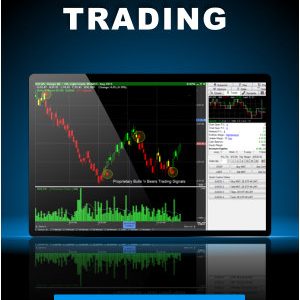In the fall of 1939, just after Adolf Hitler’s forces blasted into Poland and plunged the world into war, a young man from a small town in Tennessee instructed his broker to buy $100 worth of every stock trading on a major U.S. exchange for less than $1 per share.
His broker reported back that he’d bought a sliver of every company trading under $1 that wasn’t bankrupt. “No, no,” exclaimed the client, “I want them all. Every last one, bankrupt or not.” He ended up with 104 companies, 34 of them in bankruptcy.
The customer was named
John Templeton.
At the tender age of 26, he had to borrow $10,000—more than $200,000 today—to finance his courage.
Mr. Templeton died in 2008, but in December 1989, I interviewed him at his home in the Caribbean. I asked how he had felt when he bought those stocks in 1939.
“I regarded my own fear as a signal of how dire things were,” said Mr. Templeton, a deeply religious man. “I wasn’t sure they wouldn’t get worse, and in fact they did. But I was quite sure we were close to the point of maximum pessimism. And if things got much worse, then civilization itself would not survive—which I didn’t think the Lord would allow to happen.”
The next year, France fell; in 1941 came Pearl Harbor; in 1942, the Nazis were rolling across Russia. Mr. Templeton held on. He finally sold in 1944, after five of the most frightening years in modern history. He made a profit on 100 out of the 104 stocks, more than quadrupling his money.
Mr. Templeton went on to become one of the most successful money managers of all time. The way he positioned his portfolio for a world at war is a reminder that great investors possess seven cardinal virtues: curiosity, skepticism, discipline, independence, humility, patience and—above all—courage.
It would be absurd and offensive to suggest that investing ever requires the kind of courage Ukrainians are displaying as they fight to the death to defend their homeland. But, for most of the past decade or more, investing has required almost no courage at all, and that may well be changing.
Inflation rose to a 7.9% annual rate last month, the highest since 1982, and some analysts think oil prices could hit $200 a barrel.
In early March, Peter Berezin, chief global strategist at BCA Research in Montreal, put the odds of a “civilization-ending global nuclear war” in the next year at an “uncomfortably high 10%.”
In another sign of the times, a 22-year-old visitor to the Bogleheads investing forum on Reddit asked plaintively this week: “I can’t get over the thought that by the age of 60 will earth still be livable? Should I be using [my savings for retirement] somewhere else and live in the ‘now’?”
Yet the S&P 500 has lost less than 1% since Feb. 24, the day Russia launched its onslaught. Over the same period, according to FactSet, more than $770 million in new money has flowed into
the exchange-traded fund run by aggressive-growth investor
Cathie Wood.
That’s a familiar pattern. On Oct. 26, 1962, near the peak of the Cuban missile crisis, The Wall Street Journal reported that “If it doesn’t end in nuclear war, the Cuban crisis could give the U.S. economy an unexpected lift and maybe even postpone a recession.”
From their high in mid-October 1962, U.S. stocks fell only 7% even as the world teetered on the brink of nuclear war.
Nevertheless, a grim era for investing was not far off, in which stocks went nowhere and inflation raged. Had you invested $1,000 in large U.S. stocks at the beginning of 1966, by September 1974 it would have been worth less than $580 after inflation, according to Morningstar. You wouldn’t have stayed in the black, after inflation, until the end of 1982.
That shows two things.
First, glaringly obvious big fears, like the risk of nuclear war, can blind investors to insidious but more likely dangers, like the ravages of inflation.
Second, investors need not only the courage to act, but the courage not to act—the courage to resist. By the early 1980s, countless investors had given up on stocks, while many others had been hoodwinked by brokers into buying limited partnerships and other “alternative” investments that wiped out their wealth.
If it feels brave to you to rush out and buy energy stocks, you’re kidding yourself; that would have been courageous in April 2020, when oil prices hit their all-time low. Now, it’s a consensus trade. Courage isn’t doing the easy thing; it’s doing the hard thing.
Making a courageous investment “gives you that awful feeling you get in the pit of the stomach when you’re afraid you’re throwing good money after bad,” says investor and financial historian William Bernstein of Efficient Frontier Advisors in Eastford, Conn.
You can be pretty sure you’re manifesting courage as an investor when you listen to what your gut tells you—and then do the opposite.
Write to Jason Zweig at intelligentinvestor@wsj.com
Copyright ©2022 Dow Jones & Company, Inc. All Rights Reserved. 87990cbe856818d5eddac44c7b1cdeb8






